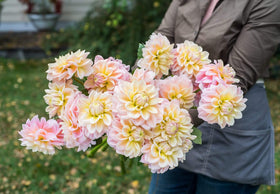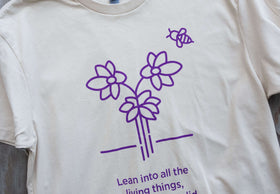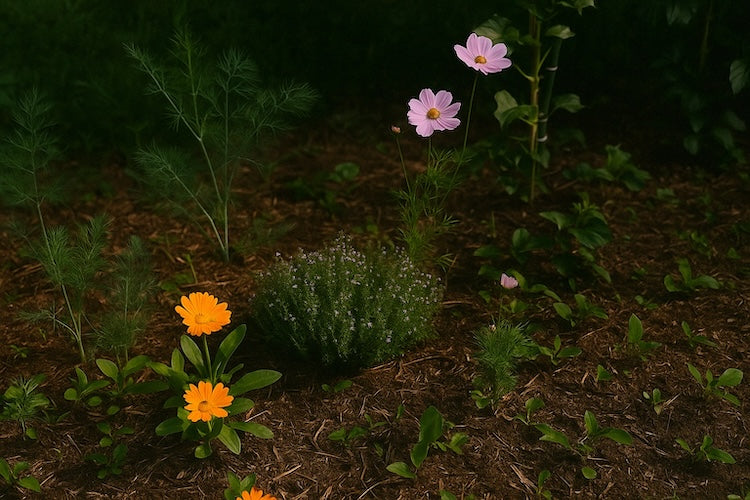At Bear Creek Farm, our work is shaped by science and guided by experience; most often built on trial and error. We test, observe, revise, and trust what we see—because nature doesn’t always behave by the book.
And lately, we’ve noticed a subtle shift: ideas once confined to research institutions and regenerative farms are quietly reshaping what’s possible in home gardens. These aren’t trends. They’re deeper ways of seeing — new understandings that are reshaping how we grow, support, and respond to plants as they bloom, adapt, and endure stress.
Many of these ideas are accessible. You don’t need specialized tools or training—just curiosity and a willingness to try. Here are a few of the most promising.
1. The Soil Isn’t a Substance—It’s a Community
Across regenerative farms, botanical institutions, and in the work of soil scientists, a new consensus is forming: soil health isn’t just about nutrients. It’s about the invisible web of life—fungi, bacteria, and microscopic networks—that quietly determine a plant’s ability to grow, resist disease, and bloom.
When planting, avoid synthetic fertilizers and high-disturbance digging. Instead, add biologically rich inputs—like worm castings or microbial inoculants — and let the soil structure remain intact. The point isn’t to “improve” your soil. It’s to support the microbial systems already doing the work. Think of your garden as a community you’re feeding, not a problem you’re solving.
2. Don’t Water on a Schedule—Water with a Purpose
Agricultural researchers and ecologists are now measuring how much water plants actually use—not just how dry the soil feels. Overwatering, it turns out, is one of the biggest causes of poor plant health.
Skip the calendar. Instead, water deeply but less frequently. Let roots chase moisture downward—this encourages strength and resilience. If you're unsure when to water, a basic moisture meter (inexpensive and widely available) can help—just press the probe into the soil and get a clear reading, instead of guessing based on the top layer. Unlike the finger test, which often misleads, this lets you know what’s happening at the root zone—where it actually matters.
3. Let the Leaves Drink
Plant scientists studying foliar uptake — how leaves absorb nutrients — have found that in certain conditions, nutrients applied to leaves can bypass sluggish root systems and deliver faster results.
Mist your plants with diluted seaweed extract or fish emulsion every few weeks during active growth. Focus on early morning or dusk, when the stomata (tiny openings on the leaves) are open. Some plants will barely respond. Others will astonish you. This is the kind of trial-and-error that’s both low risk and high reward.
4. Don’t Always Protect Your Plants from Stress—Use It
In viticulture, horticulture, and even floral farming, researchers are observing that mild, temporary stress can trigger plants to focus, bloom, and root more deeply. Stress, when applied wisely, can clarify what a plant does best.
Before bloom time, withhold water just slightly, or avoid fertilizing. Let the plant reach a bit. You can also restrict root space or pinch back some early shoots. The goal isn’t to harm—it’s to awaken the plant’s inner drive. Think of it as resilience training.
5. Diversity Is More Than Aesthetic—It’s Communication
We’ve long known that mixing plant species deters pests and supports pollinators. But recent studies in chemical ecology and plant signaling go further: plants release volatile organic compounds (VOCs) that act as airborne messages—warning neighboring plants of threat or inviting beneficial insects. In other words, your plants are speaking.
Create small pockets of interplanted herbs, flowers, or vegetables—not for appearance, but for function. Let calendula whisper to your cosmos. Let thyme sit beside your dahlias. Don’t overtidy. The more diverse your garden, the more communicative—and ultimately, more resilient—it becomes.
6. Minimal Intervention Isn’t Neglect. It’s Respect.
Drawing from regenerative agriculture and observational horticulture, more growers are choosing to do less—on purpose. They’re not lazy. They’re listening.
Skip the staking if your plants are strong enough. Let clover or alyssum grow low between flower rows. Leave last season’s stems to break down slowly. When you stop interfering, your garden reveals what it’s capable of. It doesn’t always need you to hold it up—it often needs you to step back.
Final Thoughts
We don’t offer these ideas as doctrine, and we don’t believe every gardener needs to adopt them. But if one of them intrigues you, try it. See what happens. Observe your plants, and let them tell you what they think. Some of our most powerful learning has come from getting it wrong once, then right the next season.
After all, innovation in gardening doesn’t come from perfection. It comes from paying attention.





Had so many ah ha moments reading this. I also felt “seen” as my way of gardening is more watching and allowing Mother Nature to work her magic. Thank you!!!
Very thought provoking article. Thank you, I will definitely be trying some of the suggestions.